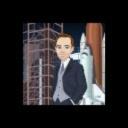Yahoo Answers is shutting down on May 4th, 2021 (Eastern Time) and beginning April 20th, 2021 (Eastern Time) the Yahoo Answers website will be in read-only mode. There will be no changes to other Yahoo properties or services, or your Yahoo account. You can find more information about the Yahoo Answers shutdown and how to download your data on this help page.
Trending News
How can we see the origins of the universe, if the matter we're composed of was THERE, while we're HERE?
I hope this isn't an incredibly naive question. Have been reading Michio Kaku's "Parallel Worlds," which discusses data from the WMAP satellite. It includes a "baby picture" of the universe as it was 380,000 years after the Big Bang.
If all matter and energy erupted from that singularity, why wouldn't all of the electromagnetic energy, moving at the speed of light, have overtaken - passed - the matter that comprises earth and all of us long ago (and thus be unavailable for us to view)?
I understand the concept of light-years, and know that we're seeing the sun, for example, where and how it was 8 minutes ago. But if I train my telescope where a star or planet USED to be, it won't be there. Likewise, how could I train a telescope on deep space and find a picture of where all energy and matter WERE, if they ARE somewhere else?
Please answer the question seriously. I'm a good-humored guy, but I really am only interested in apposite answers and links.
Thanks.
7 Answers
- 1 decade agoFavorite Answer
This is a question about the Cosmic Microwave Background and a question that I once had. What it boils down to is that the CMB was created at every point in the universe (even here), what we see on the sky is the CMB signal from a point in the universe that is 13 billion light years away. Now that we've observed that light it has passed us by. If we look tomorrow we'll observe the CMB from a point that is 13.0001 billion light years away. Essentially our CMB sky will change with time (very slowly).
The other point I should make is that every point in the universe is its centre, basically the big bang happened at every point in space. What occurred is that space expanded (not an explosion of matter), kind of like being a raisin in a rising loaf of raisin bread.
- 1 decade ago
The concept is somewhat difficult... You can't be *outside* the universe to see what's happening *inside.* If you're *inside* (which we all are), then you, your atoms, all things you see are part of the universe.
What this means is, we can't look back *far enough* to see the Big Bang, because we're all *part* of the big bang. We're inside it. What we *can* detect, and have, is the cosmic background radiation - the remnants of energy left over from the Big Bang.
What we see today, how the universe is 'stocked' with galaxies & matter, and what speed & direction its moving, tells us how it looked yesterday. And the day before. Suppose you've just missed a car accident. You turn to look, after the collision. You see two cars, moving away from each other, one's smashed on the left, the other's smashed in the front. By observing these results, and the amount of damage, you can surmise what there state was prior to the 'bang.'
That's what astronomers do, to some extent. They measure the amount of mass, it's direction - and they attempt to track it's path back to where it was. That 'baby picture' you mention is a computer generated *estimate* of how things looked very early in the Universe's life.
- FranklinLv 51 decade ago
If you are looking at something that is 10 billion light years away, you must be seeing it as it looked 10 billion years ago. Any light that it emitted more than 10 billion years ago has already passed us. - It is not possible to see all the way back to the big bang, because the light from the big bang has passed us.
If you can see something as it looked only 380,000 years after the big bang, it must be very far away and moving very fast relative to us - - but not faster than the speed of light.
- Billy ButtheadLv 71 decade ago
The universe began as a single space-time pulse of minimum size and duration.
The original entity expanded at an accelerating rate for one thirty-billionths of a second,at this time it reached a radial velocity of the speed of light and the acceleration stopped.
the result was a marble sized universe with all the requirements to evolve into the universe we see and experience to-day.
Matter and gravity emerged some time later but it was always preceded by the expanding space.
Every thing you see exists in the past, even a person in the same room with you is viewed as they were billionths of a second in the past.
Every entity in the universe is isolated in time but the universe invokes a holographic effect that allows you to interact as though no time isolation exists.
- How do you think about the answers? You can sign in to vote the answer.
- 1 decade ago
if you can understand Mistofols's answer he/she is absoloutely right!!!!!! basically you have to remember that space is expanding not matter. matter is just along for the ride. so just remember that light travels at a finite speed therefore when you look at something 13 billion lightyears away, you are seeing it as it was 13 billon years ago. the cosmic microwave background is the exact wavelength of light that was predicted from bigbang theory before it was ever discovered. this is the strongest evidence for the theory thus far. just remember one more thing, via our freind einstein, matter and energy are just different forms of the same thing, therfore matter can to turn to light and light can turn to matter. what a crazy universe we live in. good luck and i hope this helped!!!!
- fatboycoolLv 41 decade ago
We look at light from that event which has taken that long to travrl to us. The light is incredibly old, and lets us s ee what the source of it looked like when it emitted thre light. That is sort of seeing into the past. The way it looks now in real time will take billions of years to reach us.
- hotblondbabe420Lv 41 decade ago
I have a really simple answer to your otherwise complex question. It has to do with the light that is traveling to us that we "interpret" and the data that we get is put into a computer model. Most theories in astronomy come from computer models showing what "could" or "did" happen. We have no way of knowing most of the information that we have complied about the universe other than what we can hypothesize.







